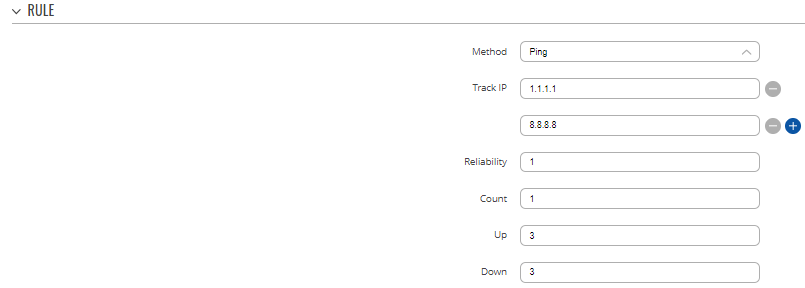Hello,
The way failover works, at least with default settings, is by periodically sending ping requests to a pre-configured host(s). If the router receives replies, it considers interface to be online. If, however, the device fails to receive a set number of reply packets, it considers that there are connectivity issues on this link and the next WAN interface online with the lowest metric is chosen to forward traffic to the internet. The default options are provided below.

They can be modified according to your needs, in case you want to have a different or multiple end points to test connectivity over specific interface.
In addition, I suggest to edit settings for each failover interface by pressing on pencil icon and append option Flush connections on with Connected and Disconnected settings. This will force already established connections to be rerouted through the currently used interface, in case connection is disrupted, without waiting until currently established connections time out.

The rules are more oriented for cases, where you want certain subnets or LAN devices or traffic originating from specific hosts to be routed through different interfaces than the current main setup.
Best regards,